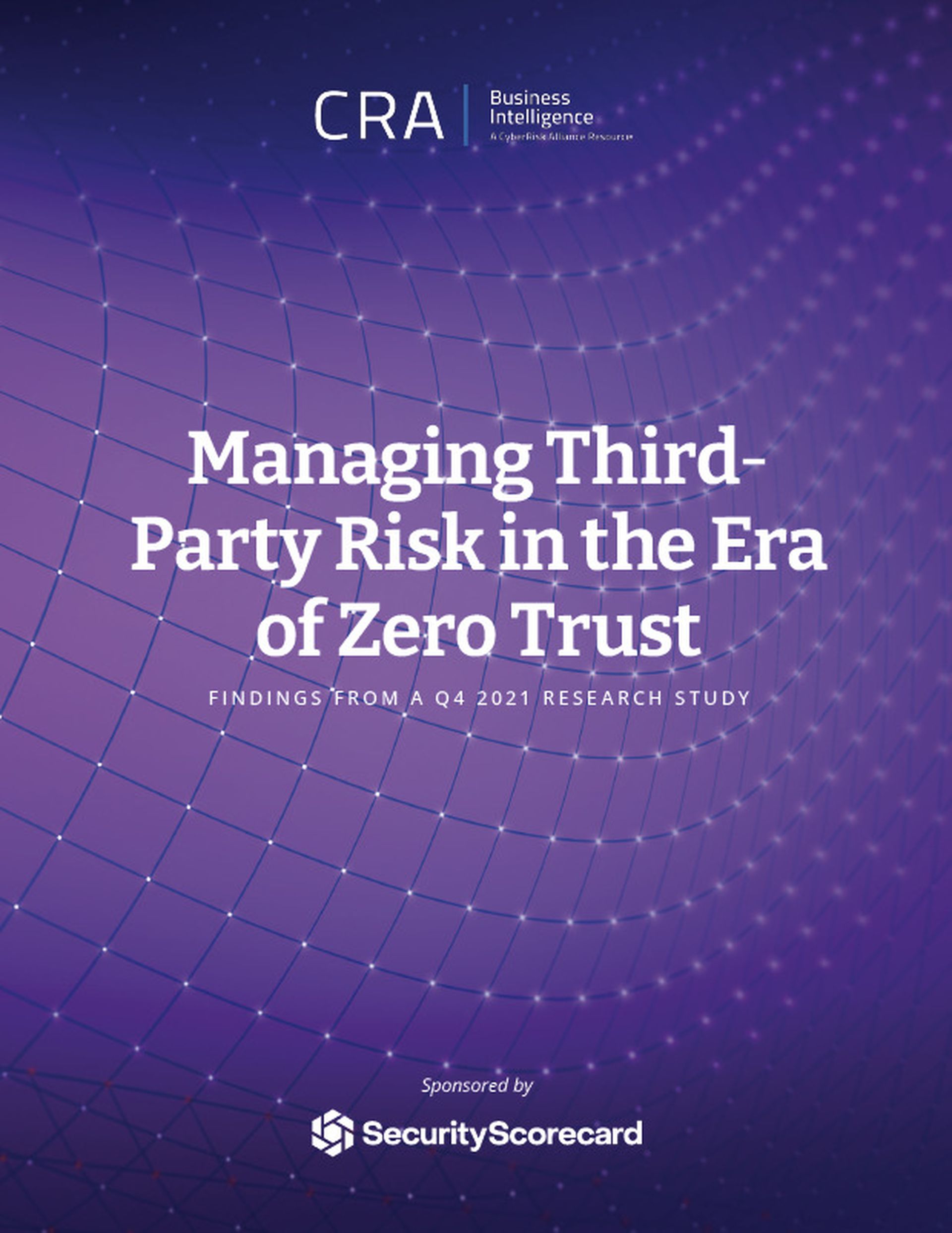Discussion Topics
Companies large and small are struggling to stave off data breaches and prevent compliance violations as third-party partners they increasingly rely upon come under attack. These findings are according to a new survey fielded by CRA Business Intelligence, the insights and research unit of cybersecurity information services company CyberRisk Alliance, and SecurityScorecard, the global leader in cybersecurity ratings.
The survey, underwritten by SecurityScorecard, gauged how well organizations understand and manage risks associated with third-party relationships. Conducted from October through mid-November 2021, 250 U.S.-based IT and cybersecurity decision-makers and influencers participated.
Public and private sector organizations grant multiple third parties access to their private networks and sensitive databases, and they rely on them for everything from expense reporting and email services to managing industrial control systems. More than one-third of participants in this study had at least 100 third-party relationships, with some sectors, such as healthcare and government, working with 500 or more vendors at any given time.
Each vendor has the potential to create additional vulnerabilities by expanding the number of entry points into an organization’s digital footprint. Yet most organizations lack the continuous visibility and knowledge of the security risks these third-party networks present. As a result, 91% of respondents had experienced a security incident related to a third-party and expressed some level of concern with experiencing another breach or falling out of compliance due to a partner vulnerability during the past 12 months.
While nearly one-third of participants are very interested in adding technology solutions to their risk management programs – principally to improve remediation times, risk assessments and regulatory compliance stances – priorities for managing third-party risk vary by industry. For instance, regulatory compliance is a top priority for healthcare, while risk assessment is a priority for financial services. Insurers seek more collaboration from their partners, while government organizations at the state, federal and local levels are looking for improved response and remediation times.
Among the study’s key findings:
- Ninety-five percent (95%) of respondents expressed some level of concern with IT security risks from third-party business relationships, and 67% of participants experienced a significant increase in third-party-related security events within their organizations during the past year.
- Those working in the heavily regulated financial services sector were most apt to report a third-party-related cyber event.
- The most popular mitigation strategy for managing third-party IT security risks was a hybrid approach in which some, but not all, work is completed in-house.
- A majority of those surveyed were at least considering – if not already incorporating – principles of zero trust to reorganize privileges and restrict third-party user and device access to their networks.

